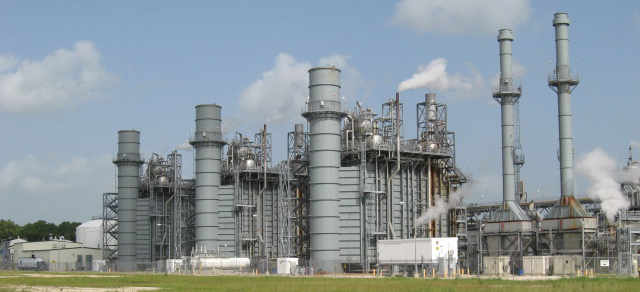
Powering Texas While Tackling Emissions
Two industry powerhouses, Calpine Corporation and ExxonMobil, have teamed up to lead a bold carbon capture initiative in Texas. This partnership focuses on the Baytown Energy Center, a natural gas cogeneration plant operated by Calpine near Houston. Their mission: transport and permanently store up to 2 million metric tons of CO2 annually—a huge step toward powering over half a million homes with low-carbon energy.
Calpine’s Baytown Carbon Capture and Storage (CCS) Project aims to decarbonize around-the-clock electricity production. The captured carbon will enter ExxonMobil’s pipeline system—the largest CO2 pipeline network in the world. This system supports both enhanced oil recovery and permanent underground sequestration, adding reliability to the industry's growing carbon infrastructure.
>> RELATED: Exxon Mobil (NYSE:XOM) Partners With Calpine for Large-Scale Carbon Storage and Low-Carbon Energy

What Makes This Project So Significant?
1. Scale and Reliability
The project will deliver approximately 500 megawatts of low-carbon power, enough to supply energy to more than 500,000 homes. It also provides steam to nearby industries, enhancing regional productivity. By leveraging natural gas, the most abundant U.S. energy resource, the project ensures grid stability even as renewable penetration increases.
2. Strategic Location
Houston's Gulf Coast is already a key energy hub. ExxonMobil’s CO2 infrastructure gives the Baytown project access to existing, scalable, and regulated carbon storage systems. This removes some of the biggest financial and logistical barriers to commercial CCS deployment.
3. Momentum Behind CCS
The Baytown facility represents ExxonMobil’s sixth CCS agreement, raising their total contracted CO2 under management to roughly 16 million metric tons per year. That level of momentum shows growing confidence across industries—from steel and fertilizer to industrial gases and now electricity—in ExxonMobil’s low-carbon infrastructure.
Voices Behind the Vision
"We’re thrilled to work with Calpine on this project that supports American energy security, enhances industrial competitiveness and leverages America’s abundant low-cost natural gas resources," said Barry Engle, President of ExxonMobil Low Carbon Solutions.
"Low-cost natural gas along with carbon capture technology and widespread geologic storage resources can bolster U.S. energy, natural gas use, jobs, and export strength," emphasized Caleb Stephenson, Calpine's Executive Vice President.
This kind of leadership, from both companies, reflects a shift in the energy sector. Carbon capture isn’t just theory anymore—it’s happening now.

>> In Other News: Statkraft Stops New Development of Green Hydrogen Projects
Why Natural Gas Still Matters
While renewables continue to grow, dispatchable energy like natural gas remains vital for grid stability. Calpine, as the largest generator of electricity from natural gas in the U.S., is uniquely positioned to lead this transition. With CCS in place, gas-powered facilities become part of the solution, not the problem.
“The nation’s gas fleet will remain the backbone of the grid for decades to come,” Stephenson added. That reality makes CCS essential—not optional—for decarbonizing power.
Economic Wins for Local Communities
Beyond emissions reduction, the project is expected to create both construction and permanent jobs. This aligns with broader clean energy goals: not just decarbonization, but economic revitalization. With major investments like the recently acquired Quail Run Energy Center and other assets in the Permian, Calpine is building a future where energy innovation also means more opportunity.
The companies also acknowledged the importance of federal support, highlighting how programs led by the Department of Energy and current policy frameworks are helping move CCS from idea to implementation.
How It Fits in the Bigger Picture
The timing couldn’t be better. The International Energy Agency reports that to meet net-zero goals by 2050, the world must capture and store over 7.6 billion metric tons of CO2 annually by mid-century. Projects like Baytown show that North America is stepping up.
According to the Global CCS Institute, there are now over 190 CCS facilities in various stages of development worldwide. This ExxonMobil-Calpine collaboration is exactly the kind of public-private initiative needed to push the industry forward.
Stepping Into a Cleaner Energy Future
While permitting and regulatory steps are still in motion, this partnership sends a clear message: scalable carbon solutions are no longer futuristic—they're here and working. It's the kind of collaboration that brings carbon capture into the mainstream, bridging energy reliability with environmental responsibility.
From powering homes to decarbonizing steam production and supporting U.S. jobs, this project proves that innovation and pragmatism can go hand in hand.
Calpine and ExxonMobil aren’t just reacting to policy or public pressure—they’re investing in what’s next.
Subscribe to the newsletter
Daily decarbonization data and news delivered to your inbox
Follow the money flow of climate, technology, and energy investments to uncover new opportunities and jobs.
Companies
Latest issues
-
The Three-Continent Move That Redefines SAF
Wishing everyone a restful holiday season.🎄🎅🎁 Inside this Issue ✈️ Cathay Goes Global With SAF in Three-Continent Fuel Deal 🧪 Proton Ventures Partners With Barents Blue For Realization Of The Bar...
-
Can One Truck Fix Hydrogen’s Biggest Problem?
Inside This Issue 🚛 Alberta's Shared Truck Model Could Crack Hydrogen Adoption ✈️ ZeroAvia Completes Financing Round 🌾 Frontier And NULIFE Scale New Biowaste Carbon Removal Approach 🔥 WAGABOX® Of ...
-
North America’s Carbon Removal Year in Review: Winners, Losers, Surprises
Inside This Issue 🌎 North America's Carbon Removal Year in Review: The Deals, Policies, and Milestones That Shaped 2025 🚢 Hapag-Lloyd And North Sea Container Line Win ZEMBA Second E-Fuel Tender 🪨 ...
Company Announcements
-
Vallourec, a world leader in premium seamless tubular solutions, and Geostock, a global specialist in underground storage of energy, have signed a Memorandum of Understanding (MoU) to strengthen th...
-
CMA CGM, DHL Step Up Ocean Freight Decarbonization with Biofuel Deal
DHL Global Forwarding and shipping group CMA CGM have agreed to jointly use 8,990 metric tons of second-generation biofuel to reduce emissions from ocean freight. The initiative is expected to cut...
-
Next-Generation Gas Turbine Control System For Thermal Power Plants Completes Functional Testing
Integration of Mitsubishi Power's control technology with Mitsubishi Electric's high-speed data processing technology Supports rapid load adjustments and diverse fuels including hydrogen Tokyo, ...
-
Proton Ventures Partners With Barents Blue For Realization Of The Barents Clean Ammonia Project
Barents Blue AS today announces Proton Ventures as new partner to the Barents Clean Ammonia Project (formerly known as the Barents Blue project). The Dutch engineering and project development compa...